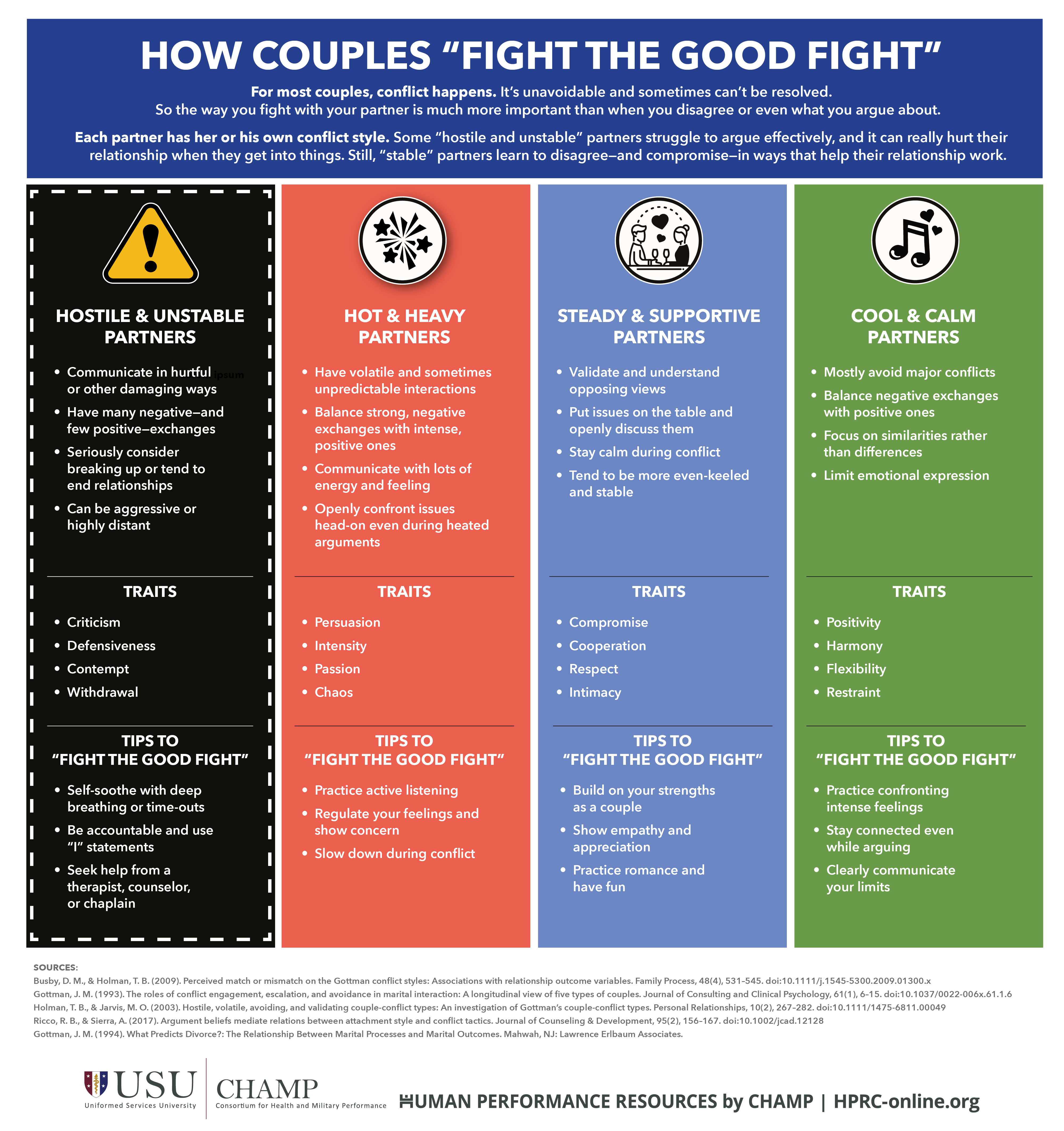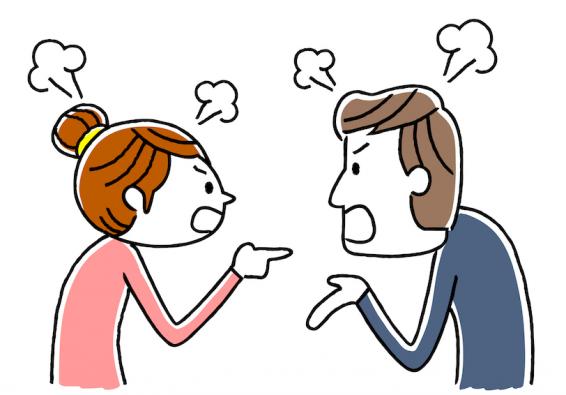To learn more about stable conflict types and how to avoid those hostile communication pitfalls, read HPRC’s articles about how conflict can work for couples and avoiding argument traps.
Disagreements are normal in any relationship, but some “conflict styles” are better than others. To learn more about stable conflict types and how to avoid those hostile communication pitfalls, read HPRC’s articles about how conflict can work for couples and avoiding argument traps.

How Couples “Fight the Good Fight”
For most couples, conflict happens. It’s unavoidable and sometimes can’t be resolved. So the way you fight with your partner is much more important than when you disagree or even what you argue about.
Each partner has her or his own conflict style. Some “hostile and unstable” partners struggle to argue effectively, and it can really hurt their relationship when they get into things. Still, “stable” partners learn to disagree—and compromise—in ways that help their relationship work.
Hostile and unstable partners
- Communicate in hurtful or other damaging ways
- Have many negative—and few positive—exchanges
- Seriously consider breaking up or tend to end relationships
- Can be aggressive or highly distant.
Traits of hostile and unstable partners
- Criticism
- Defensiveness
- Contempt
- Withdrawal
Tips to “fight the good fight” for hostile and unstable partners
- Self-soothe with deep breathing or time-outs
- Be accountable
- Use “I” statements
- Seek help from a therapist, counselor, or chaplain
Hot and heavy partners
- Have volatile and sometimes unpredictable interactions
- Communicate with lots of energy and feeling
- Openly confront issues head-on even during heated arguments
- Balance strong, negative exchanges with intense, positive ones
Traits of hot and heavy partners
- Persuasion
- Intensity
- Passion
- Chaos
Tips to “fight the good fight” for hot and heavy partners
- Practice active listening
- Regulate your feelings
- Show concern
- Slow down during conflict
Steady and supportive partners
- Validate and understand opposing views
- Put issues on the table and openly discuss them
- Stay calm during conflict
- Tend to be more even-keeled and stable
Traits of steady and supportive partners
- Compromise
- Cooperation
- Respect
- Intimacy
Tips to “fight the good fight” for steady and supportive partners
- Build on your strengths as a couple
- Show empathy and appreciation
- Practice romance
- Have fun
Cool and calm partners
- Mostly avoid major conflicts
- Focus on similarities rather than differences
- Balance negative exchanges with positive ones
- Limit emotional expression
Traits of cool and calm partners
- Positivity
- Harmony
- Flexibility
- Restraint
Tips to “fight the good fight” for cool and calm partners
- Practice confronting intense feelings
- Stay connected even while arguing
- Clearly communicate your limits
Published on: April 10, 2019
